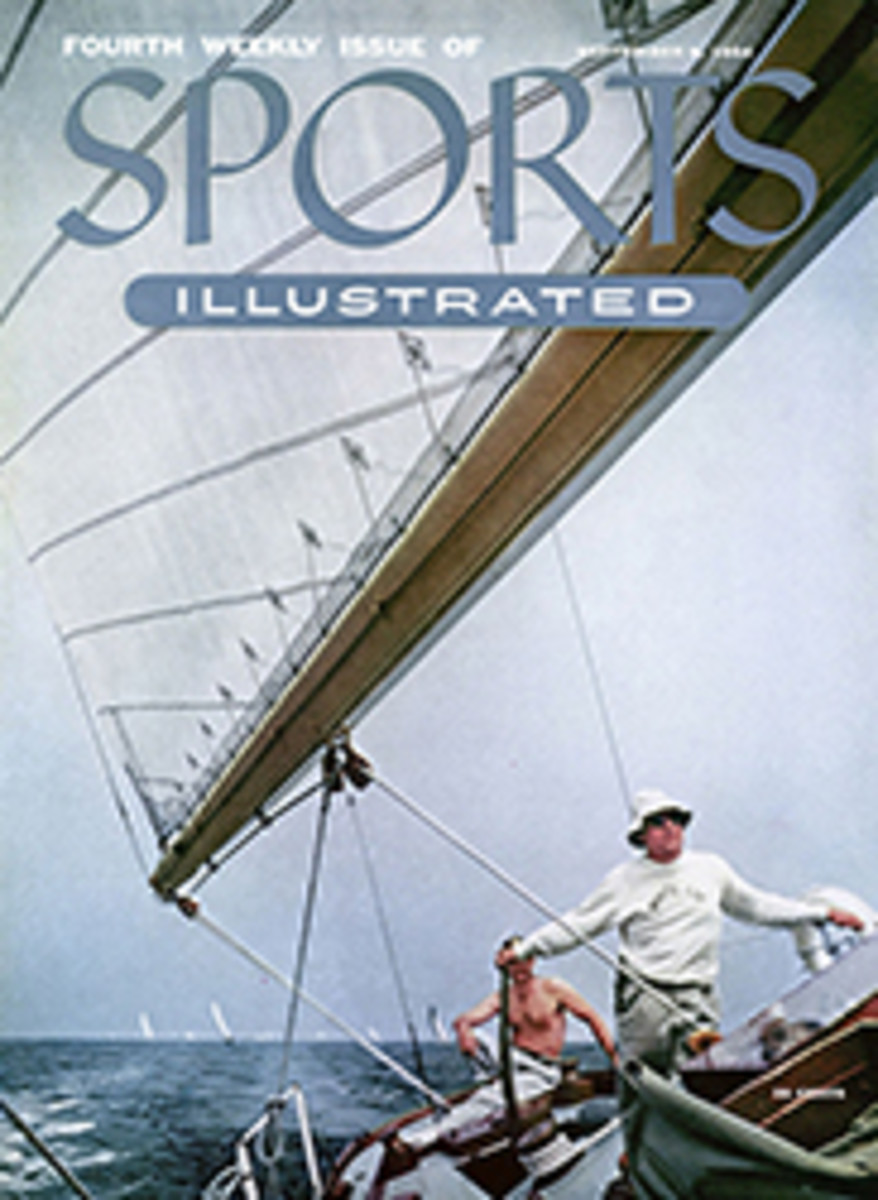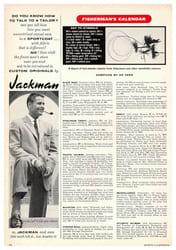
TENNIS BOUNCERS
The day of the breathless finals will soon be reached in the current Nationals at Forest Hills. The chances are that close to 14,000 tennis bugs will wedge themselves into the tidy little stadium in the big backyard of the West Side Tennis Club to see what happens. And out of that big mob, four quite special tennis bugs—aged 13 to 17—will see, hear and find out far more about what's going on than all the rest of those thousands. These will be the working ball boys.
You'll see them—if you get to the stadium or watch it on TV—standing at a sort of fake military attention, always at the ready. Off and on, you'll see them pounce in pursuit of a couple handfuls of slightly green-stained tennis balls with the over-zealous haste of beagles spotting rabbits in the carrot patch. These retrieved balls that they come up with will sometimes be placed by them on the players' rackets, held out to them, tray-fashion. More often, though, they'll bounce the balls to the pressure-laden ping men in the roomy shorts.
There will be one ball boy at each end of the court, two in the middle. They aren't apt to get noticed much more than a sprig of parsley on a T-bone steak plate. But theirs is actually a job loaded with responsibility to the player, though they are paid at a rate of 20 cents less per hour than the minimum wage law of six bits. (It's all perfectly legal—this type of work has a "pleasure" clause in it, putting it on a status somewhat different from that of working in, say, a pocketbook factory.)
On the rewarding side, however, the ball boy's job is packed with excitement as well as opportunities to see and hear the nation's top tennis heroes close up. One hardy veteran of this branch of service to the U.S. Lawn Tennis Association is a guy named Charles Brukl. He completed a five-year tour of duty as ball boy last year. This year, at the ripe age of 18, he's as far over the hill in his career as a major league pitcher pushing 40 is in his. But he's still out there this year—got kicked upstairs by being made a scorer.
ALL ABOUT STARS
After five years of bouncing them back to the top-seeded stars of the business, he knows more about what some of the ones now battling it out on Long Island are really like than their mothers—and even, possibly, the working press. For instance, it didn't surprise him too much last month when Art Larsen, the nation's third-ranking player, almost quit the Eastern grass court championships right in the middle of a match he was then losing to Samuel Giammalva. At the time, Larsen explained his off-the-beam action to reporters by saying: "I should've stayed in Europe. I'm sorry I came back. Eastern fans have something wrong with them. I don't understand them."
To take a reverse look—this one at Larsen, from the ball boy's box seat—Charles has never understood Larsen. Off the court, ball boys have always found this super-superstitious Californian a nice enough fellow. But once on the court he becomes a prize grouch with all ball boys and constantly raises the merry Ned with them. "Bounce 'em to me, boy," Larsen is always shouting at them. "Bounce 'em!"
All well and good on the bouncing, even though the ball boy prefers to place them on the flat, outstretched racket (less chance of something going wrong). But the ball boy's big lament anent Larsen is that, unlike others in the bounce-'em-to-me-boy school, he wants 'em bounced to him in different ways at different stages of the game. Viz. his early whim may be for a hard bounce; his later one for a slow treatment. Then again, he may tell his ball boy to stand back farther, later demand that he come closer.
"You can't score a guy like Larsen for future reference," Charles says. "You have to sort of ad lib with him all the way. He's awfully superstitious. And he's the toughest guy a ball boy bumps into to get along with in the Nationals."
On the other hand, give a ball boy somebody like Vic Seixas to work for and he's happy. The reputation Seixas has earned for good sportsmanship with his opponent carries through to the ball boys. When one of them retrieves for Seixas, he always knows where he stands. Seixas has no bouncing whims and never has been known to bawl out the ball boy.
WHO'S NERVOUS, ANYHOW?
As some thoughtful tournament players realize while others don't, a ball boy can get just as nervous as the man whacking the balls, in a capacity stadium. In order to reduce this nervousness to a minimum, the club has worked out a graded program so that the ball boy first works on the field-court matches before moving into the stadium. Usually he spends two years outside before he gets inside.
In addition to retrieving balls, he sees to it that favorite refreshments are on tap for the players. He has to find out what their special choices are. With the whim-swept Larsen, it can be Coke, and then again it can be Pepsi. With Billy Talbert it's orange juice, by the quart. Working in the stadium, in the finals and semi-finals, is a reward earned by a ball boy for good work during the preliminary rounds. This selection is left to the head ball boy who is a ball boy emeritus. While the pay isn't good, it frequently does add up to more than the straight hourly rate. It's doubled when the set goes beyond 9-7, tripled after 12-10 and quadrupled when it hits 23-21 (the last time this happened was four years ago). Five years ago Charles was on a triple-pay match between Schroeder and Gonzales that still stands as the jackpot of his career.
The craftsmanship involved in retrieving tennis balls is sharp. Some players want all the balls left on court until there's a break in the action. Others want them picked up almost at once. A third type—the most difficult for the ball boy—refuses to make a decision and tells the retriever to use his own judgment. "The thing is," Charles says thoughtfully, "you've got to develop a sixth sense about where every stray ball is lying, not pick them up while your man is serving, but go get them when the other guy is ready to serve."
Among the rewards rated on the terrific side by ball boys is to have a victory-happy player be so delighted by his retriever's work that he gives him one of his own rackets. It rarely happens and when it does it's always in the finals.
Naturally everyone likes to be on the inside of dramatic sports action as well as to see his picture in the paper. And those rewards in themselves are probably enough to make up for the pressure, the personality problems, and the poor pay that seem to be the lot of the Forest Hills bouncers.
ELEVEN ILLUSTRATIONS
PHOTO
CROCODILE'S SHIRT
Most top tennis players wear this lisle shirt designed by the game's great René ("Le Crocodile") Lacoste to stay tucked, neat, cool, action-free. Imported by David Crystal, $8.

